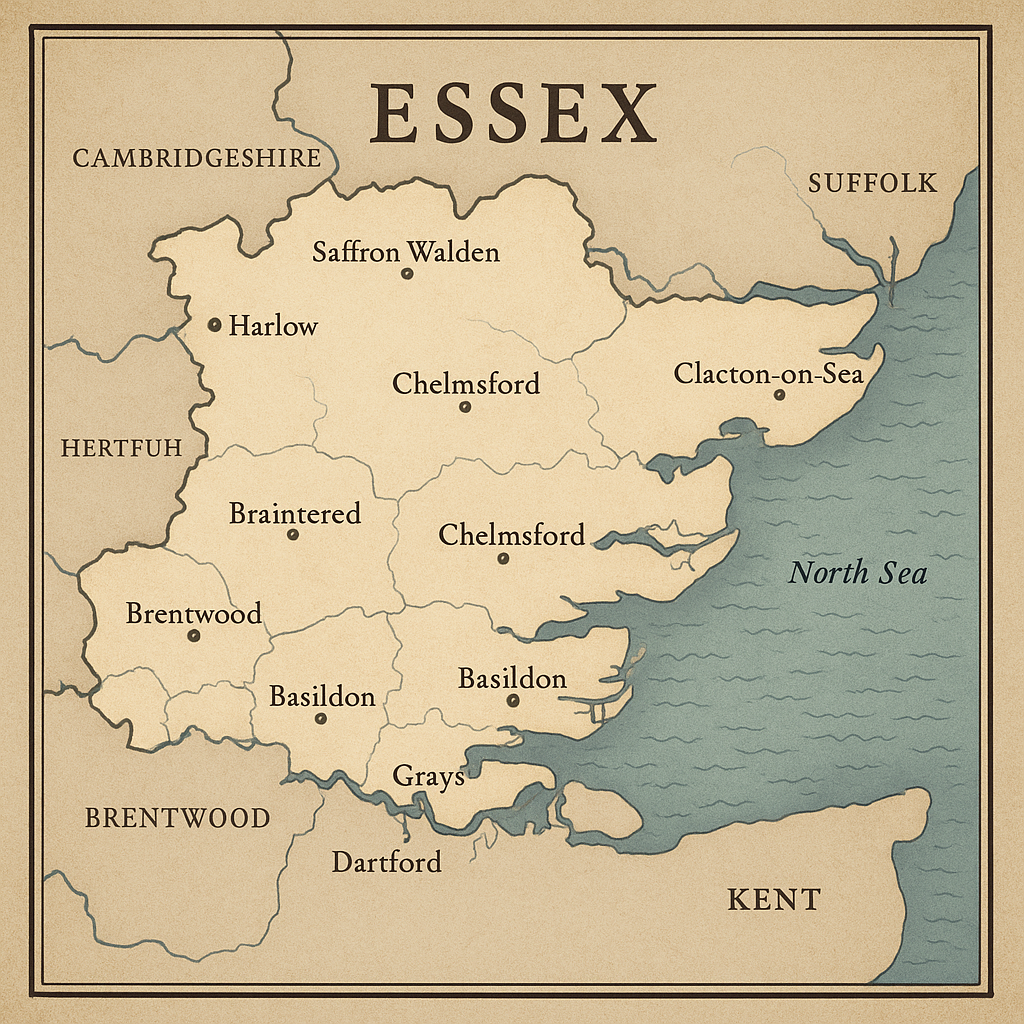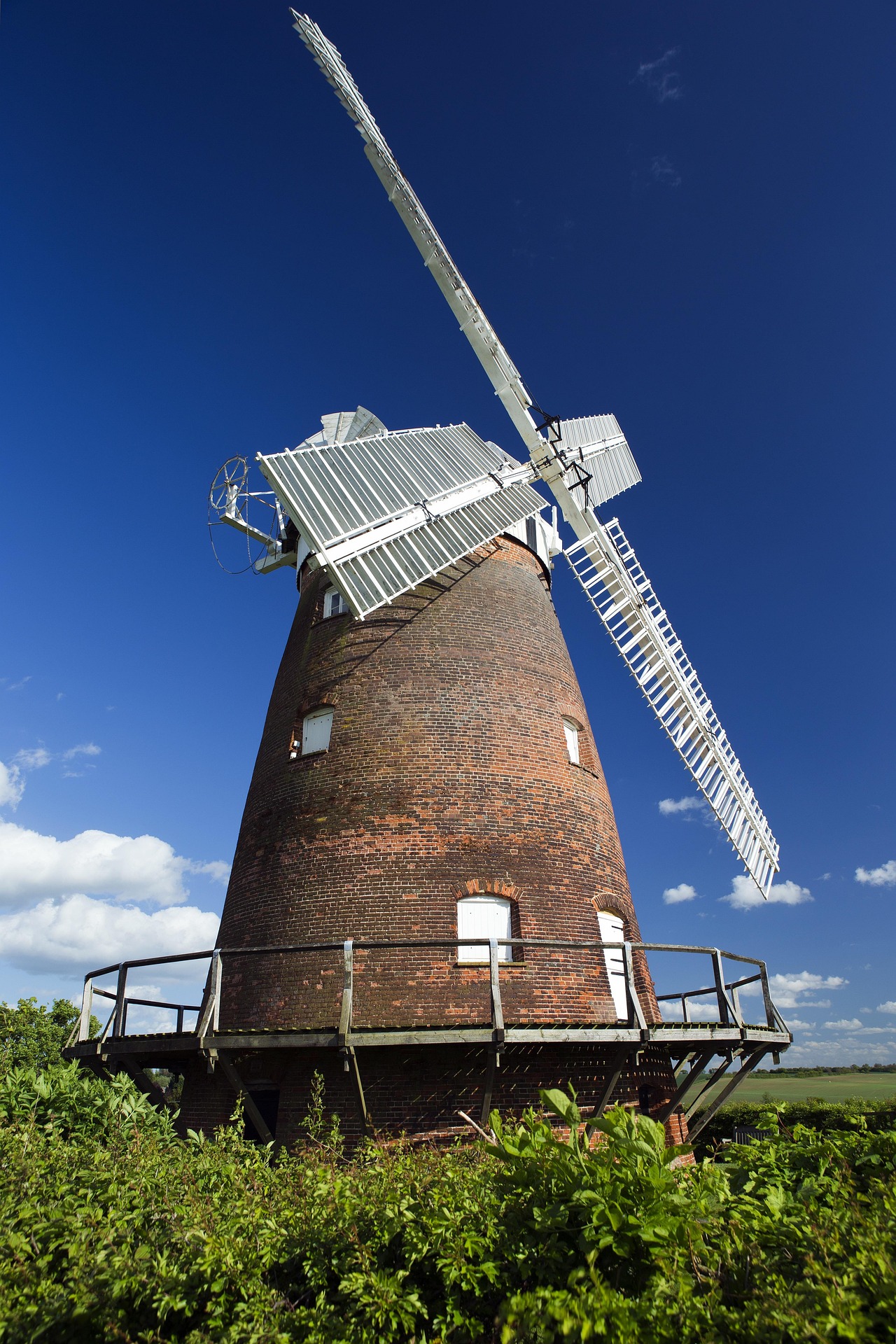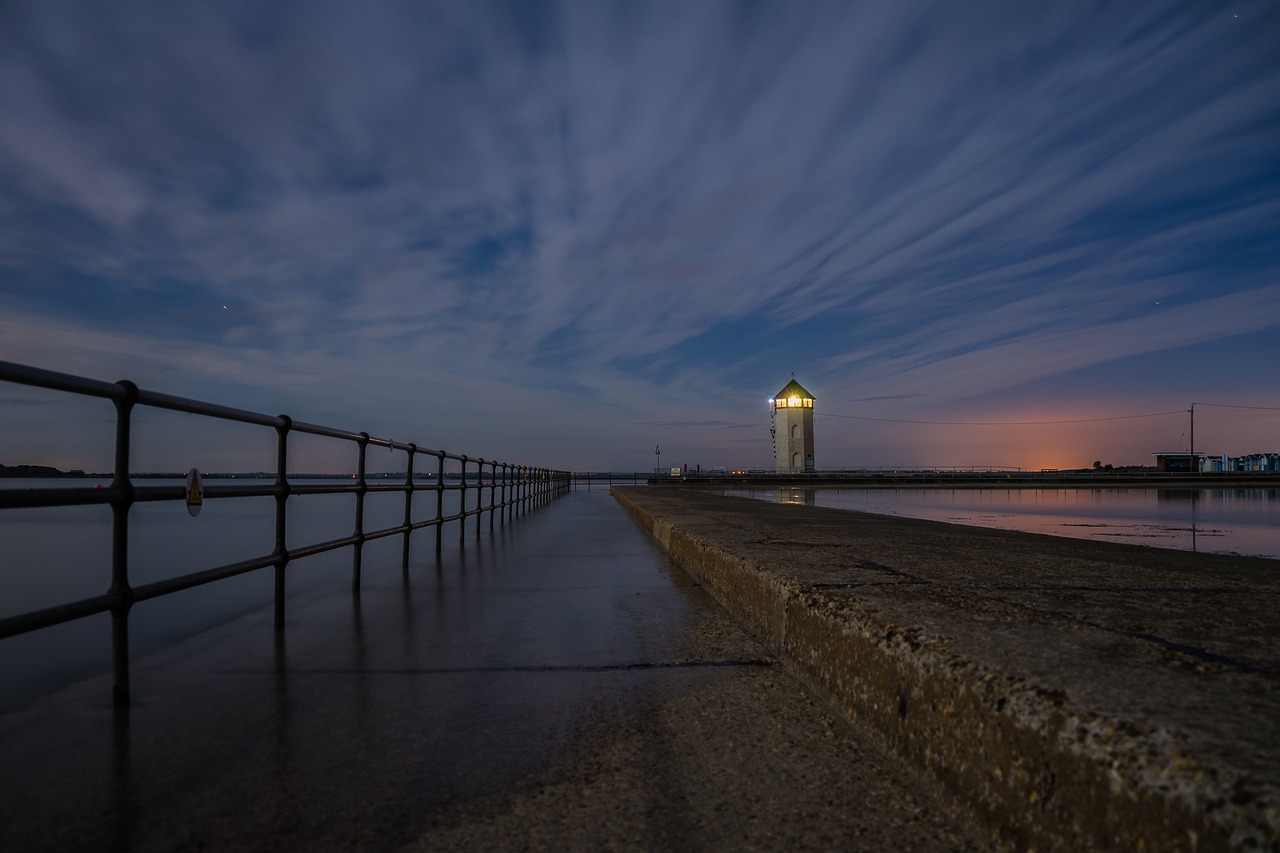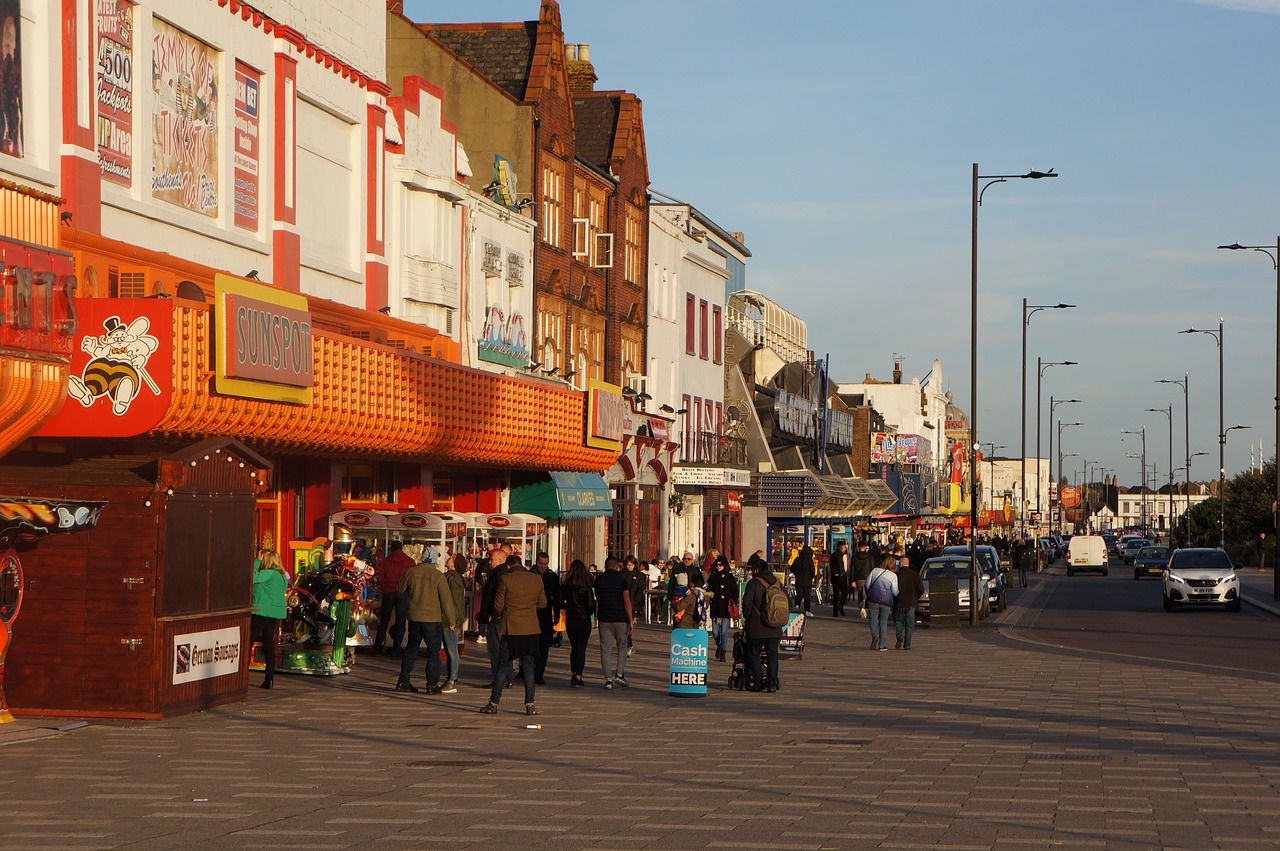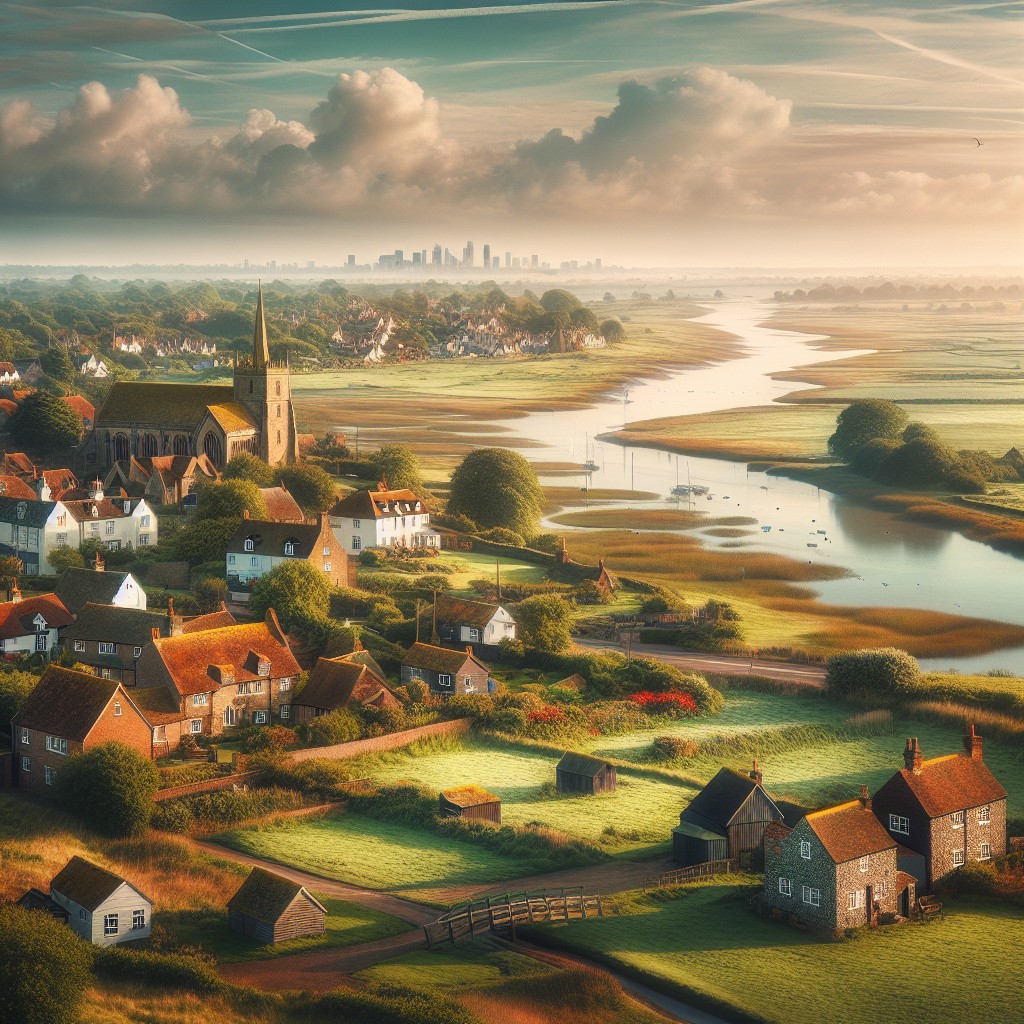
Welcome to Essex, England: Explore the County That Became a Cultural and Coastal Gem
Essex is more than just a county in the East of England — it’s a vibrant blend of historic charm, bustling seaside resorts, and dynamic towns and villages. This article will take you through the fascinating world of Essex, from its rich Anglo-Saxon roots to its modern-day appeal, including the essential role of Essex County Council.
If you’ve ever wondered why Essex holds such a prominent place in British culture, or why so many people from Essex are proud of their roots, you’re in the right place. Whether you’re planning to visit, move, or simply learn more, there’s plenty to discover about this iconic part of the UK.
Essex is a county located in the southeast of England, bordering the counties of Suffolk and Cambridgeshire to the north, Hertfordshire to the west, Kent across the River Thames to the south, and London to the southwest. With its close proximity to London, Essex has become an important commuter belt, attracting many residents who work in the capital but prefer to live in a more rural or suburban setting.
Outline
-
What Makes Essex Special Today?
-
How Did the County of Essex Develop Over Time?
-
Where Are the Best Seaside Resorts Along the Essex Coastline?
-
Which Towns and Villages in Essex Should You Visit?
-
How Has Essex County Council Shaped Modern Services in Essex?
-
Why is Chelmsford Called the County Town of Essex?
-
What’s Unique About the Essex Coastline and the Thames Estuary?
-
How Do New Towns Like Basildon and Harlow Represent Essex’s Growth?
-
What is the Connection Between Essex and Greater London?
-
Why Is Essex a Key Part of the East of England Region?
What Makes Essex Special Today?
Essex is home to a vibrant mix of cultures, histories, and natural landscapes. As part of the East of England, much of Essex retains its historic charm while embracing modern developments, making it a prime destination for visitors and a desirable area for commuters from Greater London.
From bustling towns like Chelmsford and Colchester to the peaceful retreats in areas like Epping Forest and Maldon, Essex offers a unique lifestyle. Plus, seaside destinations like Southend-on-Sea and Harwich offer residents and visitors alike a taste of the classic British coast.
The Essex County Council plays a significant role in maintaining services across Essex, ensuring that transport, education, and social care keep pace with the growing population.
How Did the County of Essex Develop Over Time?
The history of Essex dates back to Anglo-Saxon England, when it was a significant kingdom. Over time, Essex evolved into both an administrative county and a historic county.
Boundary changes, particularly those resulting from the growth of Greater London, redefined parts of Essex, with towns like Romford and Ilford becoming London boroughs of Barking and Dagenham. Despite these changes, the county of Essex has maintained a strong regional identity.
Understanding the history of Essex also means recognising landmarks like the Battle of Maldon in 991, which highlights the county’s historic importance in defending against Viking invaders.
Where Are the Best Seaside Resorts Along the Essex Coastline?
The Essex coastline is famed for its charming seaside resorts. From Southend-on-Sea, known for its vibrant pier and classic arcades, to quieter spots like Harwich and Canvey Island, there’s something for everyone.
Southend has grown to include Southend Airport, making it even more accessible for tourists and business travellers alike. Meanwhile, Clacton-on-Sea offers a more traditional seaside experience, ideal for families and day-trippers looking for sandy beaches and funfairs.
The Thames Estuary and its connection to the Port of London add to the strategic and economic importance of the Essex coast.
Which Towns and Villages in Essex Should You Visit?
When exploring towns and villages across Essex, visitors can’t miss Colchester — the oldest recorded town in Britain. Its Roman heritage, combined with the modern vibe of the University of Essex, makes it a must-see.
Chelmsford, the county town, offers a blend of shopping, green spaces, and historical attractions. Basildon, another major town, highlights post-war urban planning as one of the new towns developed after World War II.
Other gems include Maldon, famous for its sea salt and riverside charm, and Harwich, which is historically important in maritime history.
How Has Essex County Council Shaped Modern Services in Essex?
Essex County Council has been instrumental in developing the services in Essex that residents rely on today. From road infrastructure to school management and waste services, the administrative county operates efficiently to support the growing needs of Essex’s population.
The council also supports initiatives around Stansted Airport and the Great Eastern Main Line, ensuring that Essex remains well-connected to London and beyond. Thanks to their leadership, much of Essex continues to thrive as a blend of urban, suburban, and rural areas.
Why is Chelmsford Called the County Town of Essex?
Chelmsford earned the title of county town largely because of its central location and administrative importance. As the seat of the Essex County Council, Chelmsford became a hub for political and civic activities.
It was granted city status in 2012 as part of the Queen’s Diamond Jubilee, marking a significant milestone for this bustling town. Today, Chelmsford represents Essex’s past, present, and future, offering both historical landmarks and modern shopping and business centers.
The designation of Chelmsford as the county town also reflects its connectivity to the City of London via the Great Eastern Main Line.
What’s Unique About the Essex Coastline and the Thames Estuary?
The Essex coastline stretches for over 350 miles, offering one of the longest coastlines of any English county. Its diversity is remarkable: marshlands, beaches, cliffs, and estuaries make up the varied landscape.
The Thames Estuary forms a natural boundary with Kent and has long played a critical role in trade and defense. Towns like Tilbury, with its famous Tilbury Docks, are deeply tied to the maritime history of the Thames.
Canvey Island and other parts of the Essex coast offer protected areas that serve as havens for wildlife, contributing to the region’s designation as an Area of Outstanding Natural Beauty.
How Do New Towns Like Basildon and Harlow Represent Essex’s Growth?
After World War II, new towns such as Basildon and Harlow were created to alleviate London’s housing shortage. These towns were carefully planned to provide modern amenities, green spaces, and efficient transportation links.
Basildon and Harlow today remain vital parts of Essex’s economy and culture. Basildon in particular has become synonymous with Essex’s working-class spirit and vibrant community life, while Harlow boasts significant contributions to the arts and technology sectors.
Both towns illustrate how parts of Essex have evolved to meet the demands of modern life while still maintaining ties to the county’s rural past.
What is the Connection Between Essex and Greater London?
Essex and Greater London share a complex and dynamic relationship. Areas such as Romford, Ilford, and Barking were once firmly within Essex’s boundaries but now form important parts of the London Boroughs of Barking and Dagenham.
Commuter routes like the West Anglia Main Line and the Great Eastern Main Line link Essex towns to the City of London, making Essex a favoured location for Londoners seeking suburban living with easy access to the city.
Parts of Essex, especially south-west Essex, remain deeply tied culturally and economically to the London area, creating a metropolitan Essex identity distinct from more rural parts of the county.
Why Is Essex a Key Part of the East of England Region?
The county of Essex is strategically located within the East of England region, bordered by Hertfordshire, Cambridgeshire, and Suffolk. Its position makes it a gateway between London and eastern England.
Stansted Airport further cements Essex’s role as an international hub, while the Port of London Authority manages vital shipping operations through Essex’s riverways and estuaries.
Thanks to its economic, historical, and cultural contributions, Essex represents the East of England’s diversity — from the market towns of Maldon and the coastline of Harwich to the bustling cities of Chelmsford and Colchester.
Conclusion: Key Takeaways About Essex
-
Essex is home to a rich blend of history, culture, and natural beauty.
-
The county town is Chelmsford, a city that symbolises Essex’s growth and modernisation.
-
Seaside resorts like Southend-on-Sea and Clacton-on-Sea are must-visit places along the beautiful Essex coastline.
-
Towns and villages such as Colchester, Maldon, and Harwich show off Essex’s diverse heritage.
-
Essex County Council manages critical services in Essex, keeping the county vibrant and efficient.
-
Greater London has strong historic ties to Essex, particularly in areas like Barking and Dagenham.
-
New towns like Basildon and Harlow highlight the post-war development of Essex.
-
The Thames Estuary and Tilbury Docks are vital to the UK’s maritime infrastructure.
-
Epping Forest and areas of natural beauty showcase the rural charm that parts of Essex still preserve.
-
Essex voted in various ways over history to maintain a distinct identity despite boundary changes with London.
Historical Significance of Essex: From Roman Times to the Present Day
Essex has a rich and varied history that dates back to Roman times. The county was originally settled by the Trinovantes tribe, who were conquered by the Romans in AD 43. The Romans established a number of settlements in the area, including Colchester, which became the capital of Roman Britain. Today, Colchester is known for its well-preserved Roman walls and castle.
During the Anglo-Saxon period, Essex was divided into several small kingdoms, including the Kingdom of Essex. The county played a significant role in the English Civil War, with Colchester being one of the last Royalist strongholds to fall to Parliamentarian forces. The Industrial Revolution brought significant changes to Essex, with the growth of industries such as textiles and engineering.
Today, Essex is a thriving business hub with a diverse economy that includes sectors such as manufacturing, finance, and technology. The county is home to many major companies and has a strong entrepreneurial spirit.
Geography and Topography of Essex: A Land of Contrasts
Essex is known for its diverse landscape, which includes a long coastline along the North Sea, marshes and wetlands in the east, and forests and farmland in the west. The county is also home to several Areas of Outstanding Natural Beauty, such as Dedham Vale and the Dengie Peninsula.
The rural areas of Essex are characterised by picturesque villages, rolling countryside, and historic buildings. In contrast, the urban areas are bustling with activity, with towns and cities such as Chelmsford, Basildon, and Southend-on-Sea offering a range of amenities and attractions.
Notable landmarks in Essex include the historic town of Colchester, with its Roman walls and castle; the seaside resort of Southend-on-Sea, with its iconic pier; and the Dedham Vale, which inspired the paintings of renowned artist John Constable.
Climate and Weather in Essex: What to Expect
Essex has a temperate maritime climate, with mild winters and warm summers. The county experiences a moderate amount of rainfall throughout the year, with the wettest months typically being October and November.
During the summer months, temperatures in Essex can reach highs of around 25°C (77°F), while in winter, temperatures can drop to around 2°C (36°F). Snowfall is relatively rare in Essex, but it can occur during particularly cold winters.
Population and Demographics of Essex: Who Lives Here?
Essex has a population of over 1.8 million people, making it one of the most populous counties in England. The county is known for its diversity, with a mix of ethnicities and cultures represented among its residents.
The population of Essex is also relatively young, with a median age of 38.6 years. The county has a higher proportion of younger residents compared to the national average.
There are several notable communities and neighborhoods within Essex, each with its own unique character. For example, Chelmsford is known for its vibrant city centre and cultural offerings, while Brentwood is popular for its suburban feel and proximity to London.
Economy and Industry in Essex: A Thriving Business Hub
Essex has a diverse economy that encompasses a range of industries. The county is home to many major companies, particularly in sectors such as manufacturing, finance, and technology.
One of the key factors driving Essex’s economic success is its proximity to London. Many businesses choose to locate in Essex due to its lower costs compared to the capital, while still benefiting from its close proximity to major transportation routes and international markets.
Essex is also home to several business parks and innovation centres, which provide a supportive environment for startups and entrepreneurs. These facilities offer access to resources and networking opportunities, helping to foster innovation and growth.
Education in Essex: Schools, Colleges and Universities
Essex has a strong education system, with a range of primary and secondary schools that provide high-quality education for students of all ages. The county is also home to several colleges and universities, offering a wide range of courses and programs.
Notable educational institutions in Essex include the University of Essex, which is known for its research and teaching excellence, and Anglia Ruskin University, which has campuses in Chelmsford and Southend-on-Sea.
In addition to traditional academic institutions, Essex is also home to a number of vocational training centers and apprenticeship programs, providing opportunities for students to gain practical skills and experience.
Culture and Entertainment in Essex: From Theatre to Sports
Essex has a vibrant cultural scene, with a range of theatres, museums, galleries, and music venues. The county is home to several theaters that host a variety of performances, including plays, musicals, and concerts.
There are also many museums and galleries in Essex that showcase the county’s rich history and heritage. For example, the Colchester Castle Museum houses a collection of artefacts from Roman times, while the Fry Art Gallery in Saffron Walden features works by artists associated with the area.
Sports are also an important part of Essex’s culture, with several professional sports teams based in the county. Football is particularly popular, with teams such as Colchester United and Southend United attracting a loyal fan base. Essex is also known for its cricket, with the county team, Essex County Cricket Club, enjoying success in domestic competitions.
Famous People from Essex: Celebrities and Personalities
Essex has been home to many notable individuals who have made significant contributions to their respective fields. From celebrities to politicians, the county has produced a diverse range of talent.
Some famous people from Essex include:
– Dame Helen Mirren, an Academy Award-winning actress known for her roles in films such as “The Queen” and “Gosford Park.”
– Russell Brand, a comedian, actor, and author known for his unique style and outspoken personality.
– Jamie Oliver, a celebrity chef and television personality who has revolutionized the way people think about food.
– Dame Maggie Smith, an acclaimed actress known for her roles in films such as the “Harry Potter” series and “Downton Abbey.”
– Sir Ian McKellen, a renowned actor known for his roles in films such as “The Lord of the Rings” trilogy and “X-Men.”
These individuals have not only achieved success in their respective fields but have also helped to shape the cultural identity of Essex.
Tourism in Essex: Places to Visit and Things to Do
Essex offers a wide range of attractions and activities for visitors to enjoy. From historic landmarks to natural beauty spots, there is something for everyone to explore.
One of the most popular tourist destinations in Essex is Colchester, with its rich history and well-preserved Roman walls. Visitors can explore the town’s many museums and galleries, or take a stroll through the picturesque Castle Park.
For those who enjoy the outdoors, there are several Areas of Outstanding Natural Beauty to explore. Dedham Vale, located on the border between Essex and Suffolk, offers stunning landscapes that inspired the paintings of John Constable. The Dengie Peninsula, located on the east coast of Essex, is home to a variety of wildlife and offers opportunities for birdwatching and walking.
Essex is also known for its vibrant events and festivals. From music festivals to food and drink events, there is always something happening in the county. For example, the V Festival, held annually in Chelmsford, attracts some of the biggest names in music, while the Essex Food and Drink Festival showcases the best of local produce.
In conclusion, Essex is a county with a rich history, diverse landscape, and thriving economy. From its Roman roots to its current status as a business hub, the county has played an important role in shaping the culture and identity of England. With its range of attractions and activities, Essex offers something for everyone to enjoy, making it a popular destination for tourists and residents alike.
FAQs
What is Essex?
Essex is a county in the east of England, bordered by Suffolk to the north, Cambridgeshire to the northwest, Hertfordshire to the west, Greater London to the southwest, and the Thames Estuary to the south.
What is the population of Essex?
As of mid-2019, the estimated population of Essex was 1,832,700.
What are some major cities/towns in Essex?
Some major cities/towns in Essex include Chelmsford, Basildon, Southend-on-Sea, Colchester, Harlow, Brentwood, and Braintree.
What is the economy of Essex like?
Essex has a diverse economy, with industries such as manufacturing, services, and agriculture. Some major employers in the county include Ford Motor Company, Stansted Airport, and the Port of Tilbury.
What are some popular tourist attractions in Essex?
Some popular tourist attractions in Essex include Colchester Castle, Southend Pier, Hylands House and Estate, Audley End House and Gardens, and the Dedham Vale Area of Outstanding Natural Beauty.
What is the climate like in Essex?
Essex has a temperate maritime climate, with mild winters and cool summers. The county receives an average of 600-700mm of rainfall per year.
